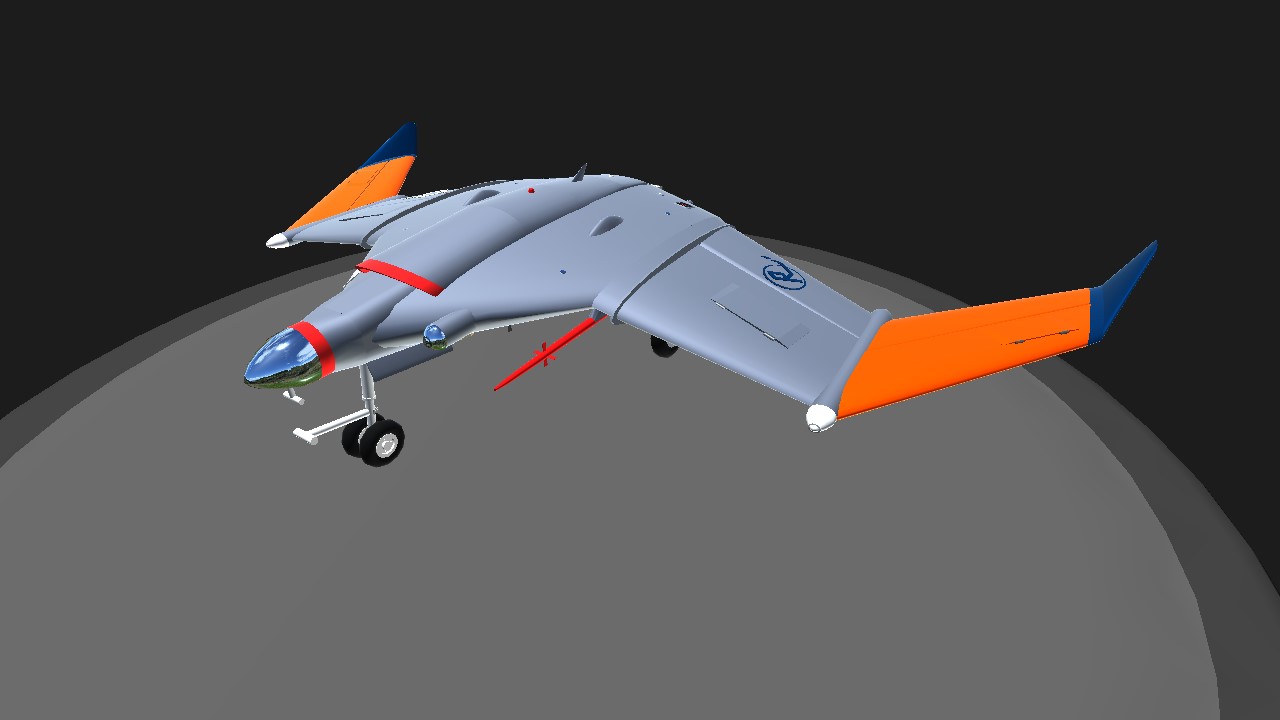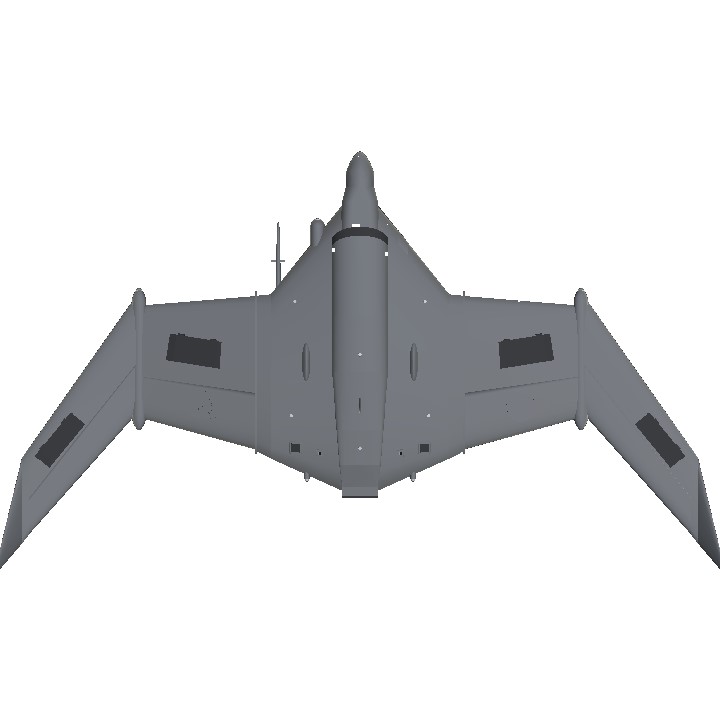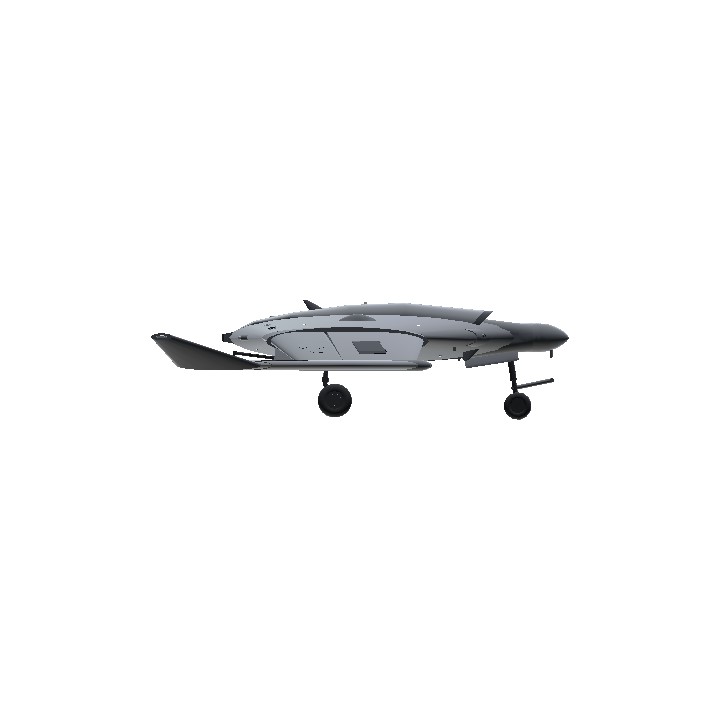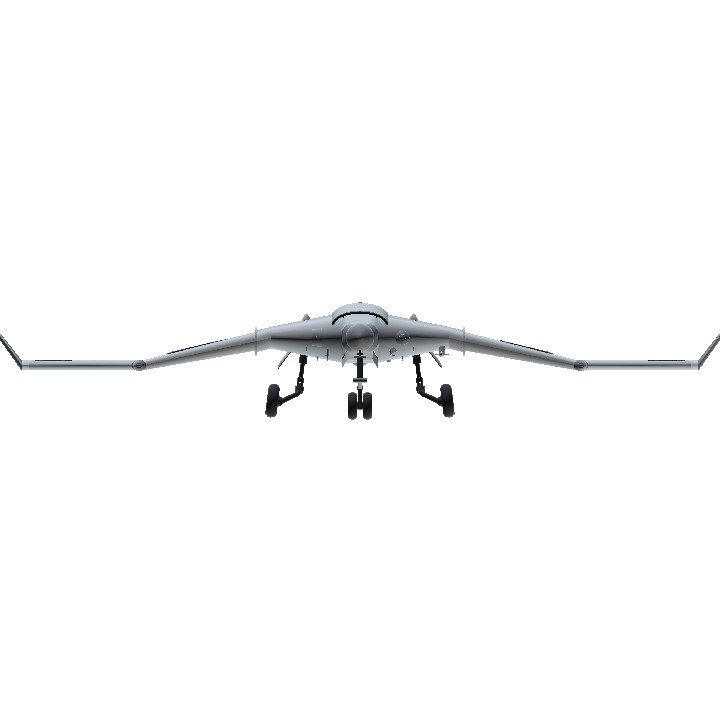
Rainier QLX-125 Ghost
A prototype carrier-borne air-to-ground attacker UCAV. Originally spawned from the RQ-120 Wisp recon UAV design, with new wings, redesigned strengthened landing gear, and a tail-hook. The QLX-125 also features an experimental engine-driven laser mounted on a rotating turret, in place of the RQ-120's original high-powered long-range recon camera.

OPERATIONS:
AG-1 = Laser System On-Off
AG-2 = Master Arm On/Off
AG-3 = Autopilot Stability Assist
AG-4 = Spin-Recovery Parachutes
AG-5 = Tailhook
AG-6 = Fold Wings
AG-7 = Launch Bar
AG-8 = All Light Systems On/Off
BACKSTORY:
QLX-125 Ghost, first flight, March 17, 2019.
The QLX-125 Ghost was originally a mere concept UCAV derived from it's design-sibling, the RQ-120 Wisp (currently in development). The Ghost was originally termed as the "MQ-125" and was intended to be a multi-role support drone, with an emphasis on air-to-air support and low-speed dogfights. However as the MQ-125 concept continued to flesh out and was tested in computer simulations, it's maneuverability and speed turned out to be rather disappointing and insufficient for air-to-air combat roles. It's speed problem was fixed by uprating it's powerplant, but that ended up consuming more fuel, so the fuselage had to sacrifice possible room for another pair of weapon bays for more fuel storage.
Original MQ-125 renderings:


The MQ-125 concept eventually was put on the back-burner as Rainier and it's engineers sort of lost faith in the design. Rainier in the mean time focused more on the development of their F-36A Broadsword and RQ-120 Wisp designs.

In early 2019, the US Navy contacted Rainier Aerospace with interest on optionally-manned fighters. Rainier responded with showing one of their recent one-off experimental F-36 designs they were working on (the F-36XC Edge). The Navy requested Rainier to produce a navalized version of the F-36XC Edge. The Navy found appeal in the F-36 design since it already incorporates advanced AI and semi-autonomy systems, so R&D costs are non-existent since Rainier already developed everything. The Navy awarded Rainier Aerospace a small contract for x1 carrier-capable flight test airframe derived from the F-36XC Edge. The Navy had zero interest in taking on navalized production-F-36's and only wanted just this one highly-special aircraft to "toy" around with and get a picture of what the future with 6th generation air systems is going to look like (with the upcoming F/A-XX).

While this deal was going on, the US Navy ALSO requested the need for a light-attack carrier-borne UCAV, but this time, the Navy was considering acquiring production-models of this UCAV. Rainier saw some potential with their semi-dead MQ-125 concept, and the US Navy approved of it, but for now only wanted to purchase a few experimental prototypes. Thus, the MQ-125 gained the new designation "QLX-125" since it's status has been "degraded" to an experimental/prototype platform.

The QLX-125 would remove all external hard-point attachments (with the exception of 1 on the left side to hold a telemetry-data probe). The weapons it would carry are a single M61 Vulcan gatling gun with 250 rounds and a degraded rate-of-fire, a small center-line weapons bay that can hold either x2 Mark 82 SnakeEye unguided bombs or x2 AGM-114 Hellfire laser-guided missiles. It also will carry it's signature engine-powered laser turret system mounted on the very nose of the aircraft. It's also equipped with x2 chaff and flare dispensers.

The Ghost is powered by an "off-the-shelf" non-afterburning turbofan engine commonly found in the civilian sector of aviation on bizjets. The Ghost for now is only an experimental airframe with the possibility of entering production if the Navy is satisfied with the design.
PREVIEW IMAGES:




















ENJOY!
Specifications
General Characteristics
- Predecessor Rainier MQ-125 Ghost [Flight Dynamics Fixed and Other Improvements]
- Successors 1 airplane(s)
- Created On Windows
- Wingspan 41.3ft (12.6m)
- Length 24.0ft (7.3m)
- Height 6.9ft (2.1m)
- Empty Weight 3,487lbs (1,581kg)
- Loaded Weight 7,672lbs (3,480kg)
Performance
- Power/Weight Ratio 1.757
- Wing Loading 40.8lbs/ft2 (199.1kg/m2)
- Wing Area 188.1ft2 (17.5m2)
- Drag Points 6669
Parts
- Number of Parts 183
- Control Surfaces 4
- Performance Cost 939




